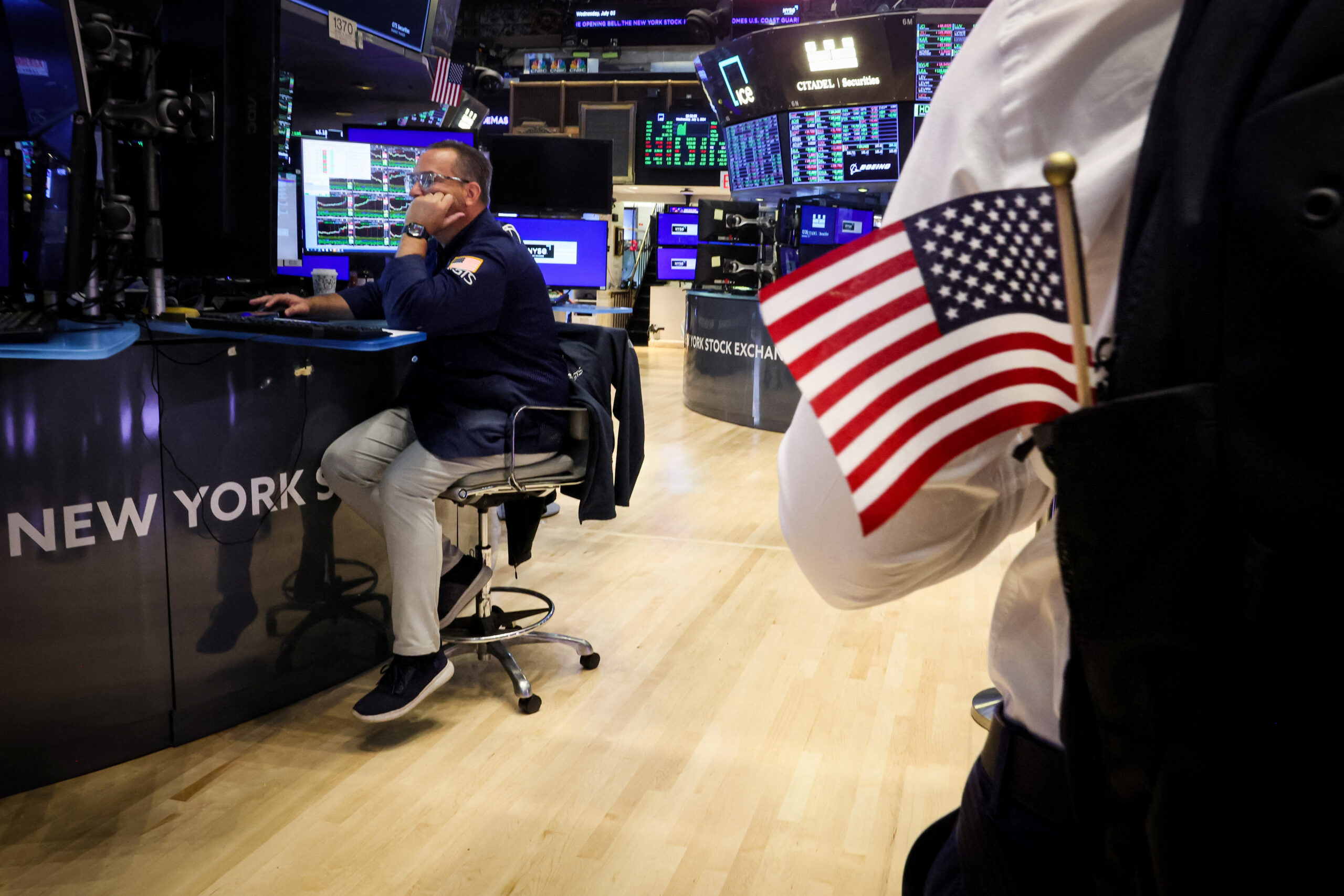A look at the day ahead in U.S. and global markets.
In an extraordinary round trip over the past week, world markets have rebounded sharply from days of turbulence – thanks in part to the Bank of Japan almost apologizing on Wednesday for its role in the ruckus – and traders now try to figure out what’s next.
Japan’s benchmark Nikkei stock index returned to Friday’s close at one point earlier – completing a near 5,000 point, 12% roundabout in just three days and ending Wednesday’s session about 1% higher.
As volatility gauges subsided back toward long-term averages, the BoJ’s influential deputy governor Shinichi Uchida underscored the market recovery by saying the burst of market volatility that followed last week’s interest rate rise and promise of more may in turn force the central bank to hold back.
“As we’re seeing sharp volatility in domestic and overseas financial markets, it’s necessary to maintain current levels of monetary easing for the time being,” Uchida said in a speech to business leaders in the northern Japanese city of Hakodate.
At the heart of the problem over the past week was that the BoJ move seemed to puncture an estimated half-trillion dollar yen-funded currency ‘carry trade’, catapulting the currency higher in the process. About two-thirds of those short yen positions may have already been unwound, according to estimates by JPMorgan.
The dollar/yen exchange rate has now rebounded 4% from Monday’s 7-month low to reclaim a foothold above 147.
The VIX ‘fear index’ of U.S. stock market volatility has now returned to 23 – almost a third of Monday’s peak and back closer to its historic average of 19.3.
Along with more sober assessments of the likelihood of U.S. recession any time soon, Wall Street’s recovery looks set to continue later today – with futures for all major indexes all up more than 1% ahead of the bell.
To the extent that global growth jitters were part of the market hiccup of the past week, Chinese trade numbers for July also helped settle things down a bit. Although Chinese export growth missed forecasts, imports were ahead of expectations.
Attention then switches back to the fundamentals of the earnings season and supercharged Federal Reserve rate cut bets.
If worries about pricey tech stocks and a reappraisal of the artificial intelligence theme caused last week’s upheaval, Super Micro Computer’s (NASDAQ: SMCI) miss overnight might keep nerves jangling in that sector.
Super Micro’s gross margins came in below estimates as high costs tied to the production of servers with the latest AI chips weighed on profits and sent its shares down 14%.
The read-across to other major chipmakers was limited so far – with AI torchbearer Nvidia still up 1.5% in pre-market trading on Wednesday.
What’s more, overall second-quarter earnings remain impressive. Aggregate annual S&P500 profit growth is tracking 13.7% – more than two points higher than pre-season estimates, according to LSEG data.
And there are some big winners despite the recent tech wobble. Uber’s (NYSE: UBER) results beat Wall Street estimates on Tuesday on the back of steady demand for its ride-sharing and food-delivery services, lifting its shares 5%.
In interest rate markets, the broader stock market stabilization has tempered the Fed’s view somewhat.
However, the futures market still prices in a hefty 41 basis points of cuts next month, and it also includes more than 100bps by the year-end.
Tuesday’s $58 billion three-year Treasury auction went off without a hitch and some $42 billion of benchmark 10-year goes under the hammer later today.
With a yield of 3.93%, the Treasury is getting 10-year funding more than 20bp cheaper than if the auction was held this time last week.
As to recession worries more generally, there’s little on Wednesday’s diary to shift the dial on that – with tomorrow’s jobless claims data likely to be a focus given the sudden bout of angst about labor market weakness.
For most investors, a ‘soft landing’ remains the best guess and stepped-up Fed rate cuts will only underscore that.
Franklin Templeton Institute’s Stephen Dover points out that the average one-year stock market return after the first Fed rate cut is almost 5% even when a recession occurs – but it’s 16.6% when the cuts come without a recession materializing.
In Europe, pharma giant Novo Nordisk (NYSE: NVO) trimmed its full-year profit outlook after a sub-forecast sales update for its popular weight-loss drug Wegovy – stirring worries among investors about stiffening competition from Eli Lilly.
Elsewhere, politics dominated.
Democratic presidential nominee Kamala Harris and her newly selected vice presidential running mate, Minnesota Governor Tim Walz, campaigned for the first time together on Tuesday in Philadelphia.
The tailwind behind Harris’ campaign has national opinion polls showing her slightly ahead of challenger Donald Trump, but betting markets have cut the odds of her taking the White House.
The PredictIt site now puts her chances of victory at some 57% – almost 10 points clear of Trump.
Key developments that should provide more direction to U.S. markets later on Wednesday:
* US June consumer credit
* Bank of Finland governor and European Central Bank policymaker Olli Rehn speaks
* US corporate earnings: Walt Disney, Warner Bros Discovery, Marathon, Occidental Petroleum, Mckesson, Atmos Energy, Emerson Electric, CVS Health, Monster Beverage, Ralph Lauren, Hilton Worldwide, Zimmer Biomet, Corpay, Global Payments, Equinix, CF Industries, Bio-Techne, Charles River Laboratories, NiSource etc
* US Treasury sells $42 billion of 10-year notes
(Source: ReutersReuters)
Mark Glenn is a financial journalist and breaking news reporter for ABBO News. Mark is known for his ability to deliver real-time news updates on market developments, mergers and acquisitions, corporate earnings reports, and regulatory changes, helping investors stay informed and make sound financial decisions. Read Full Bio










